

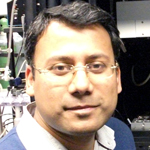 Amit Agarwal is the Chica and Heinz Schaller Research Group Leader at the Institute for Anatomy and Cell Biology, Heidelberg University, Germany. He received his Ph.D. in neurosciences, at the Max-Planck Institute of Experimental Medicine, Göttingen, Germany with Dr. Klaus-Armin Nave. He performed his post-doctoral training from 2010 to 2017, in the Department of Neuroscience at the Johns Hopkins University, USA with Dr. Dwight Bergles. The Agarwal laboratory uses optophysiology and in vivo multiphoton microscopic techniques, single-cell genetics, mouse transgenics, and computational methodologies to decipher cellular connectivity and molecular pathways by which neurons and glia interact, interconnect and integrate into the neural networks. The focal aim of his laboratory is to understand the functional significance of these neuron-glia connections in the neural circuits, and their role in cognition, learning, and memory; and study how disturbances in these fine cellular interactions can contribute to various neurological and psychiatric disorders ranging from multiple sclerosis to autism.
Amit Agarwal is the Chica and Heinz Schaller Research Group Leader at the Institute for Anatomy and Cell Biology, Heidelberg University, Germany. He received his Ph.D. in neurosciences, at the Max-Planck Institute of Experimental Medicine, Göttingen, Germany with Dr. Klaus-Armin Nave. He performed his post-doctoral training from 2010 to 2017, in the Department of Neuroscience at the Johns Hopkins University, USA with Dr. Dwight Bergles. The Agarwal laboratory uses optophysiology and in vivo multiphoton microscopic techniques, single-cell genetics, mouse transgenics, and computational methodologies to decipher cellular connectivity and molecular pathways by which neurons and glia interact, interconnect and integrate into the neural networks. The focal aim of his laboratory is to understand the functional significance of these neuron-glia connections in the neural circuits, and their role in cognition, learning, and memory; and study how disturbances in these fine cellular interactions can contribute to various neurological and psychiatric disorders ranging from multiple sclerosis to autism.
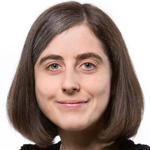 Nicola Allen is an Assistant Professor at the Salk Institute for Biological Studies, USA. She received her PhD working with David Attwell at UCL, and performed Postdoctoral research with Ben Barres at Stanford University. Her lab investigates how neuronal synapses are regulated throughout life: from the formation of synapses during development, to the remodeling of synapses in the adult in response to experience, to the loss of synapses in aging. This is approached not just by studying neurons, but by asking how non-neuronal glial cells, specifically astrocytes, regulate synapse number and synaptic function.
Nicola Allen is an Assistant Professor at the Salk Institute for Biological Studies, USA. She received her PhD working with David Attwell at UCL, and performed Postdoctoral research with Ben Barres at Stanford University. Her lab investigates how neuronal synapses are regulated throughout life: from the formation of synapses during development, to the remodeling of synapses in the adult in response to experience, to the loss of synapses in aging. This is approached not just by studying neurons, but by asking how non-neuronal glial cells, specifically astrocytes, regulate synapse number and synaptic function.
https://allen.salk.edu
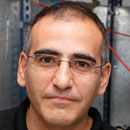 Alfonso Araque is Professor in the Department of Neuroscience at the University of Minnesota since 2013. He obtained his Ph.D. in 1993 in Biological Sciences at Universidad Complutense de Madrid. He did his postdoctoral research with Dr Phil Haydon at the Iowa State University, Ames, USA, from 1996 to 1999, studying astrocyte-neuron communication in cultured cells. He established his independent laboratory in 2001 at the Cajal Institute in Madrid, Spain, where he continued to study the properties and mechanisms of the reciprocal communication between neurons and astrocytes. He was Coordinator of the Biomedicine area of the National Agency for Evaluation and Prospective in Spain, Vice-President of the Spanish Society for Neuroscience. He is editorial board member of Cell Calcium, Glia and eNeuro. His major contributions include: the first demonstration of astrocyte-induced slow inward currents (SIC) mediated by calcium and SNARE-protein dependent glutamate release from astrocytes; the ability of astrocytes to discriminate between the activity of different synapses and to integrate those inputs, which indicate that astrocytes show integrative properties for synaptic information processing; the existence of new forms of neuron-astrocyte signaling mediated by endocannabinoids; the ability of astrocytes to regulate synaptic transmitter release at single hippocampal synapses; the existence of a form of long-term potentiation (LTP) of synaptic transmission induced by the temporal coincidence of astrocytic and postsynaptic signalling; the ability of endocannabinoids to potentiate synaptic transmission through stimulation of astrocytes; the involvement of astrocytes in the cholinergic-induced LTP in vivo; and the circuit- and synapse-specific astrocyte-neuron signaling in the striatum.
Alfonso Araque is Professor in the Department of Neuroscience at the University of Minnesota since 2013. He obtained his Ph.D. in 1993 in Biological Sciences at Universidad Complutense de Madrid. He did his postdoctoral research with Dr Phil Haydon at the Iowa State University, Ames, USA, from 1996 to 1999, studying astrocyte-neuron communication in cultured cells. He established his independent laboratory in 2001 at the Cajal Institute in Madrid, Spain, where he continued to study the properties and mechanisms of the reciprocal communication between neurons and astrocytes. He was Coordinator of the Biomedicine area of the National Agency for Evaluation and Prospective in Spain, Vice-President of the Spanish Society for Neuroscience. He is editorial board member of Cell Calcium, Glia and eNeuro. His major contributions include: the first demonstration of astrocyte-induced slow inward currents (SIC) mediated by calcium and SNARE-protein dependent glutamate release from astrocytes; the ability of astrocytes to discriminate between the activity of different synapses and to integrate those inputs, which indicate that astrocytes show integrative properties for synaptic information processing; the existence of new forms of neuron-astrocyte signaling mediated by endocannabinoids; the ability of astrocytes to regulate synaptic transmitter release at single hippocampal synapses; the existence of a form of long-term potentiation (LTP) of synaptic transmission induced by the temporal coincidence of astrocytic and postsynaptic signalling; the ability of endocannabinoids to potentiate synaptic transmission through stimulation of astrocytes; the involvement of astrocytes in the cholinergic-induced LTP in vivo; and the circuit- and synapse-specific astrocyte-neuron signaling in the striatum.
 Dr Giorgio Carmignoto is group leader at the Institute of Neurosciences which belongs to the National Research Council (CNR), the main public research organisation in Italy. He is also associated with the Department of Biomedical Sciences of the University of Padua. The central theme of his research is the specific signalling between neurons and astrocytes investigated by laser-scanning microscope living cell imaging and patch-clamp recording techniques. Among obtained results are the first evidence for the ability of astrocytes i) to be activated by neurotransmitter synaptic release in slice preparations; ii) to work as principal mediators of neurovascular coupling; iii) to generate neuronal synchrony by acting on extrasynaptic NMDA receptors. His research is now focused on the role of astrocytes in epilepsy.
Dr Giorgio Carmignoto is group leader at the Institute of Neurosciences which belongs to the National Research Council (CNR), the main public research organisation in Italy. He is also associated with the Department of Biomedical Sciences of the University of Padua. The central theme of his research is the specific signalling between neurons and astrocytes investigated by laser-scanning microscope living cell imaging and patch-clamp recording techniques. Among obtained results are the first evidence for the ability of astrocytes i) to be activated by neurotransmitter synaptic release in slice preparations; ii) to work as principal mediators of neurovascular coupling; iii) to generate neuronal synchrony by acting on extrasynaptic NMDA receptors. His research is now focused on the role of astrocytes in epilepsy.
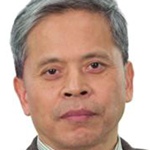 Shumin Duan is a neuroscientist. He serves as a professor and the dean of Zhejiang University Faculty of Medicine, Hangzhou, China. He got his Ph. D. from Kyushu University in Japan in 1991 and received a postdoctoral training at University of Hawaii and University of California at San Francisco during 1997-1999. His research interests focuses on the function and the mechanisms of neuron-glia interactions in health and disease. He has made a number of contributions in the field of Neuroscience, including the roles of glial cells in synaptic plasticity and mechanisms of signaling molecule release from glial cells. He is an academician of Chinese Academy of Sciences and a member of the Academy of Sciences for the Developing World (TWAS). He is the president of Chinese Society for Neuroscience and a council member of International Brain Research Organization. He serves as the Editor-in-Chief of Neuroscience Bulletin and an editorial board member in several international neuroscience journals.
Shumin Duan is a neuroscientist. He serves as a professor and the dean of Zhejiang University Faculty of Medicine, Hangzhou, China. He got his Ph. D. from Kyushu University in Japan in 1991 and received a postdoctoral training at University of Hawaii and University of California at San Francisco during 1997-1999. His research interests focuses on the function and the mechanisms of neuron-glia interactions in health and disease. He has made a number of contributions in the field of Neuroscience, including the roles of glial cells in synaptic plasticity and mechanisms of signaling molecule release from glial cells. He is an academician of Chinese Academy of Sciences and a member of the Academy of Sciences for the Developing World (TWAS). He is the president of Chinese Society for Neuroscience and a council member of International Brain Research Organization. He serves as the Editor-in-Chief of Neuroscience Bulletin and an editorial board member in several international neuroscience journals.
Website
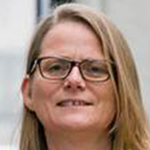 Elly Hol is professor of “Glia biology of brain diseases” at the University Medical Center Utrecht and professor of “Biology of glia and neural stem cells” at the University of Amsterdam. The research of her group is focused on the role of glial cells in brain diseases, including Alzheimer’s disease, stroke, schizophrenia and glioma. The overall aim is to elucidate the molecular and functional changes in glia that contribute to the pathogenesis of neurological and psychiatric diseases. Her work is particularly concerned with studying glial cells in human post-mortem brain tissue, human cell models, and in mouse models for brain diseases. She applies sophisticated immunological, molecular, and cell biological techniques on whole brain tissue and on glia isolated from human and mouse brains.
Elly Hol is professor of “Glia biology of brain diseases” at the University Medical Center Utrecht and professor of “Biology of glia and neural stem cells” at the University of Amsterdam. The research of her group is focused on the role of glial cells in brain diseases, including Alzheimer’s disease, stroke, schizophrenia and glioma. The overall aim is to elucidate the molecular and functional changes in glia that contribute to the pathogenesis of neurological and psychiatric diseases. Her work is particularly concerned with studying glial cells in human post-mortem brain tissue, human cell models, and in mouse models for brain diseases. She applies sophisticated immunological, molecular, and cell biological techniques on whole brain tissue and on glia isolated from human and mouse brains.
Elly was trained as a medical biologist with a specialization in molecular neurobiology. After her Ph.D. in Utrecht, she obtained a Max-Planck Fellowship to work for 2 years at the Max-Planck-Institute for Neurobiology in Martinsried, Germany. In 1997, she started as a post-doc at the Netherlands Institute for Brain Research in Amsterdam, where she acquired substantial funding, including a fellowship of the Netherlands Brain foundation. Between 2003 and 2013 she headed the group “Astrocyte Biology & Neurodegeneration” at the Netherlands Institute for Neuroscience. As of 2013 she works at the department of translational neuroscience, Brain Center Rudolf Magnus, University Medical Center Utrecht. She is in the editorial board of Glia and Neuroglia, chair of the scientific advisory board of Alzheimer Nederland, chair of GliaNed, and coordinator of the master track Experimental and Clinical Neuroscience. Her work is published in leading journals such as Brain, Molecular Psychiatry, Science, and Stem Cells Translational Medicine. She is regularly invited as a speaker at dedicated research conferences and at events for the general public.
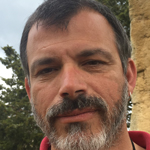 Dr. Giovanni Marsicano is a tenured researcher at Inserm. He leads the group “Endocannabinoids and Neuroadaptation” at the NeuroCentre Magendie, an INSERM and University of Bordeaux Research Center devoted to neuroscience. Dr. Marsicano is a Veterinary Medicine Doctor as formation. After his diploma, he worked on research related to Embryonic Stem Cells from farm animals and to xenotransplantation models in Italy for 4 years. He then moved to the Max-Planck Institute of Psychiatry in Munich for a PhD student position, where he initiated the work on the role of type-1 cannabinoid receptors (CB1) and of the endocannabinoid system (ECS) in brain physiology, which since has been his main research interest. The subject of his PhD thesis was the generation of conditional mutants for CB1 and anatomical and functional studies on the mechanisms of action of the ECS. After PhD graduation in 2001, he made two post-doctoral periods in Germany and moved to Bordeaux in 2006 (recruited as Inserm senior scientist in 2007) to lead his independent research group. He is member of the SfN, the French Society of Neuroscience, the International Cannabinoid Research Society (ICRS) and of the International Society of Neurochemistry (ISN). By using conditional mutagenesis in mice and behavioral, biochemical and electrophysiological tools, his work contributed defining the role of CB1 in specific cell populations in learning and memory, food intake and energy balance, anxiety, stress-coping and others. Through a clear bottom-up scientific approach, these studies allowed exploring some general principles of brain functioning, such as the balance between excitation and inhibition, the interactions between the brain and the periphery, the importance of energy metabolism in brain functions and, more recently, the interaction glial-neurons. In 2012, by generating conditional mutant mice lacking CB1 receptors from GFAP-positive cells, he contributed to define the role of astroglial CB1 receptors in the working memory effects of cannabinoids and on their in vivo electrophysiological correlates. Since then, the role of astroglial CB1 receptors became one of the most important lines of research in his group. In particular, published and ongoing studies deal with the impact of CB1 receptors on gliotransmission and bioenergetic functions of astrocytes. Dr. Marsicano will present a brief critical analysis of advantages and limitations of behavioral approaches in neuroscience and will summarize the recent results of his team concerning the roles of astroglial CB1 receptors in brain functions.
Dr. Giovanni Marsicano is a tenured researcher at Inserm. He leads the group “Endocannabinoids and Neuroadaptation” at the NeuroCentre Magendie, an INSERM and University of Bordeaux Research Center devoted to neuroscience. Dr. Marsicano is a Veterinary Medicine Doctor as formation. After his diploma, he worked on research related to Embryonic Stem Cells from farm animals and to xenotransplantation models in Italy for 4 years. He then moved to the Max-Planck Institute of Psychiatry in Munich for a PhD student position, where he initiated the work on the role of type-1 cannabinoid receptors (CB1) and of the endocannabinoid system (ECS) in brain physiology, which since has been his main research interest. The subject of his PhD thesis was the generation of conditional mutants for CB1 and anatomical and functional studies on the mechanisms of action of the ECS. After PhD graduation in 2001, he made two post-doctoral periods in Germany and moved to Bordeaux in 2006 (recruited as Inserm senior scientist in 2007) to lead his independent research group. He is member of the SfN, the French Society of Neuroscience, the International Cannabinoid Research Society (ICRS) and of the International Society of Neurochemistry (ISN). By using conditional mutagenesis in mice and behavioral, biochemical and electrophysiological tools, his work contributed defining the role of CB1 in specific cell populations in learning and memory, food intake and energy balance, anxiety, stress-coping and others. Through a clear bottom-up scientific approach, these studies allowed exploring some general principles of brain functioning, such as the balance between excitation and inhibition, the interactions between the brain and the periphery, the importance of energy metabolism in brain functions and, more recently, the interaction glial-neurons. In 2012, by generating conditional mutant mice lacking CB1 receptors from GFAP-positive cells, he contributed to define the role of astroglial CB1 receptors in the working memory effects of cannabinoids and on their in vivo electrophysiological correlates. Since then, the role of astroglial CB1 receptors became one of the most important lines of research in his group. In particular, published and ongoing studies deal with the impact of CB1 receptors on gliotransmission and bioenergetic functions of astrocytes. Dr. Marsicano will present a brief critical analysis of advantages and limitations of behavioral approaches in neuroscience and will summarize the recent results of his team concerning the roles of astroglial CB1 receptors in brain functions.
 Keith Murai is the Director of the Centre for Research in Neuroscience at McGill University, Leader of the Brain Repair and Integrative Neuroscience (BRaIN) Program at the Research Institute of the McGill University Health Centre, and Professor in the Department of Neurology and Neurosurgery at McGill University. He is a recipient of a Canada Research Chair position and is an EJLB Scholar. His research has two main areas of focus: (1) Understanding how neurons and glial cells cooperate to regulate brain development and homeostasis and (2) Discovering mechanism that regulate the plasticity of synapses that underlie memory formation and cognition. His research group also interlaces preclinical models of Down syndrome, Alzheimer’s disease, and stroke to better understand how specific neuronal and glial pathways become disrupted under pathological conditions and how activating/inhibiting specific pathways can protect the diseased or injured brain. His laboratory uses advanced mouse genetic, imaging, electrophysiological, and optogenetic techniques and has pioneered approaches for understanding glial cells in brain function. He is an Associate Editor at the Journal of Neuroscience, Editor at Frontiers in Cellular Neuroscience, Section Editor at the Journal of Experimental Neuroscience, and a Member of the editorial board at Developmental Neurobiology.
Keith Murai is the Director of the Centre for Research in Neuroscience at McGill University, Leader of the Brain Repair and Integrative Neuroscience (BRaIN) Program at the Research Institute of the McGill University Health Centre, and Professor in the Department of Neurology and Neurosurgery at McGill University. He is a recipient of a Canada Research Chair position and is an EJLB Scholar. His research has two main areas of focus: (1) Understanding how neurons and glial cells cooperate to regulate brain development and homeostasis and (2) Discovering mechanism that regulate the plasticity of synapses that underlie memory formation and cognition. His research group also interlaces preclinical models of Down syndrome, Alzheimer’s disease, and stroke to better understand how specific neuronal and glial pathways become disrupted under pathological conditions and how activating/inhibiting specific pathways can protect the diseased or injured brain. His laboratory uses advanced mouse genetic, imaging, electrophysiological, and optogenetic techniques and has pioneered approaches for understanding glial cells in brain function. He is an Associate Editor at the Journal of Neuroscience, Editor at Frontiers in Cellular Neuroscience, Section Editor at the Journal of Experimental Neuroscience, and a Member of the editorial board at Developmental Neurobiology.
https://www.mcgill.ca/crn/research/murai
 Kira Poskanzer is an Assistant Professor in the Department of Biochemistry & Biophysics at the University of California, San Francisco (UCSF). She received her undergraduate degree at Brown University, and her PhD in Neuroscience at UCSF with Graeme Davis, studying mechanisms of synaptic vesicle exo- and endocytosis. She carried out her postdoctoral fellowship at Columbia University in Rafael Yuste's lab, using two-photon imaging and electrophysiology to explore the role of astrocytes in mammalian cortical circuit synchronization. During her training, she received numerous awards and fellowships, and published her work in journals including Nature, Neuron, and PNAS. Dr. Poskanzer started her independent lab studying neuron-astrocyte interactions in the cortex at UCSF in 2015. Current projects focus on interrogation of cellular- and circuit-level mechanisms of astrocytic activation and regulation of neuronal activity via application of two-photon imaging, photoactivation of caged compounds, and electrophysiology.
Kira Poskanzer is an Assistant Professor in the Department of Biochemistry & Biophysics at the University of California, San Francisco (UCSF). She received her undergraduate degree at Brown University, and her PhD in Neuroscience at UCSF with Graeme Davis, studying mechanisms of synaptic vesicle exo- and endocytosis. She carried out her postdoctoral fellowship at Columbia University in Rafael Yuste's lab, using two-photon imaging and electrophysiology to explore the role of astrocytes in mammalian cortical circuit synchronization. During her training, she received numerous awards and fellowships, and published her work in journals including Nature, Neuron, and PNAS. Dr. Poskanzer started her independent lab studying neuron-astrocyte interactions in the cortex at UCSF in 2015. Current projects focus on interrogation of cellular- and circuit-level mechanisms of astrocytic activation and regulation of neuronal activity via application of two-photon imaging, photoactivation of caged compounds, and electrophysiology.
https://kiraposkanzerlab.org
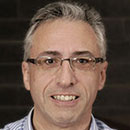 Richard Robitaille is a Professor in the Département de neurosciences at Université de Montréal, Montréal, Canada. He is the director of the research group on the central nervous system (GRSNC) at Université de Montréal. He received his Ph.D. in 1989 in Neurobiology at Université Laval with Dr Jacques P. Tremblay. He did his post-doctoral training with Dr Milton P. Charlton in the Department of Physiology at the University of Toronto from 1989 to 1993. He then started his independent research activities in 1993 at Université de Montréal where he stayed since. He received number of national and international awards at all stages of his career. He is an associate editor for the journal Glia and Current Opinion in Physiology. His research focuses on the role of glial cells in the regulation of synaptic functions in normal as well as in pathological conditions. He uses mammalian neuromuscular junctions and acute brain slices as experimental models. He addresses the role of glial cells in the regulation of basal synaptic transmission and the regulation of synaptic plasticity. He also studies the contribution of glial cells in the outcome of synaptic competition, during aging and in ALS.
Richard Robitaille is a Professor in the Département de neurosciences at Université de Montréal, Montréal, Canada. He is the director of the research group on the central nervous system (GRSNC) at Université de Montréal. He received his Ph.D. in 1989 in Neurobiology at Université Laval with Dr Jacques P. Tremblay. He did his post-doctoral training with Dr Milton P. Charlton in the Department of Physiology at the University of Toronto from 1989 to 1993. He then started his independent research activities in 1993 at Université de Montréal where he stayed since. He received number of national and international awards at all stages of his career. He is an associate editor for the journal Glia and Current Opinion in Physiology. His research focuses on the role of glial cells in the regulation of synaptic functions in normal as well as in pathological conditions. He uses mammalian neuromuscular junctions and acute brain slices as experimental models. He addresses the role of glial cells in the regulation of basal synaptic transmission and the regulation of synaptic plasticity. He also studies the contribution of glial cells in the outcome of synaptic competition, during aging and in ALS.
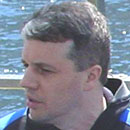 Dmitri Rusakov is a Professor of Neuroscience (since 2007) and Wellcome Trust Principal Fellow (since 2013) at UCL Institute of Neurology. Graduated with a Masters in Physics in 1984 he obtained his PhD in Neurobiology and Biophysics at Bogomeltz Institute of Physiology in Kiev in 1988. He received an independent research academic award in 1990 at the same Institute but moved to the UK in 1993 to continue his postdoctoral studies with Mike Stewart at the Open University, and from 1998 with Alan Fine and Tim Bliss at the National Institute for Medical Research, London. His independent academic career in the UK started in 1999 with an MRC Career Development Award, which he moved to UCL in 2000 to continue his collaboration with Dimitri Kullmann. His main scientific interests focus on basic mechanisms of formation and transfer of neural signals in the brain, inside and outside the synaptic cleft. Increasingly, this involves rapid molecular communication with astroglia. His laboratory combines modern methods of patch-clamp electrophysiology in organised brain tissue with novel optical imaging approaches and extensive biophysical modelling.
Dmitri Rusakov is a Professor of Neuroscience (since 2007) and Wellcome Trust Principal Fellow (since 2013) at UCL Institute of Neurology. Graduated with a Masters in Physics in 1984 he obtained his PhD in Neurobiology and Biophysics at Bogomeltz Institute of Physiology in Kiev in 1988. He received an independent research academic award in 1990 at the same Institute but moved to the UK in 1993 to continue his postdoctoral studies with Mike Stewart at the Open University, and from 1998 with Alan Fine and Tim Bliss at the National Institute for Medical Research, London. His independent academic career in the UK started in 1999 with an MRC Career Development Award, which he moved to UCL in 2000 to continue his collaboration with Dimitri Kullmann. His main scientific interests focus on basic mechanisms of formation and transfer of neural signals in the brain, inside and outside the synaptic cleft. Increasingly, this involves rapid molecular communication with astroglia. His laboratory combines modern methods of patch-clamp electrophysiology in organised brain tissue with novel optical imaging approaches and extensive biophysical modelling.
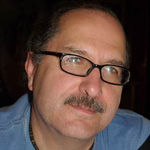 Leonid Savtchenko is a Senior Research Associate at UCL Institute of Neurology, UK. Graduated with a Masters in Theoretical Physics, he obtained his PhD in Neurobiology and Biophysics at Bogomeltz Institute of Physiology in Kiev, Ukraine in 1993. He performed Postdoctoral research with Suzanne-Tyc Dumont at CNRS, Marseille, France and from 2000 with prof. Enrico Cherubini at SISSA, Trieste, Italy. His independent academic career in Dnepr University started in 2002 until he moved to UCL in 2009 to continue his collaboration with prof. Dmitri Rusakov. The central subject of his research is an analysis of complex neuron - glia neuronal networks by theoretical modelling and computer simulations via cloud technology. His research is now focused on the role of astrocytes in network memory formation.
Leonid Savtchenko is a Senior Research Associate at UCL Institute of Neurology, UK. Graduated with a Masters in Theoretical Physics, he obtained his PhD in Neurobiology and Biophysics at Bogomeltz Institute of Physiology in Kiev, Ukraine in 1993. He performed Postdoctoral research with Suzanne-Tyc Dumont at CNRS, Marseille, France and from 2000 with prof. Enrico Cherubini at SISSA, Trieste, Italy. His independent academic career in Dnepr University started in 2002 until he moved to UCL in 2009 to continue his collaboration with prof. Dmitri Rusakov. The central subject of his research is an analysis of complex neuron - glia neuronal networks by theoretical modelling and computer simulations via cloud technology. His research is now focused on the role of astrocytes in network memory formation.